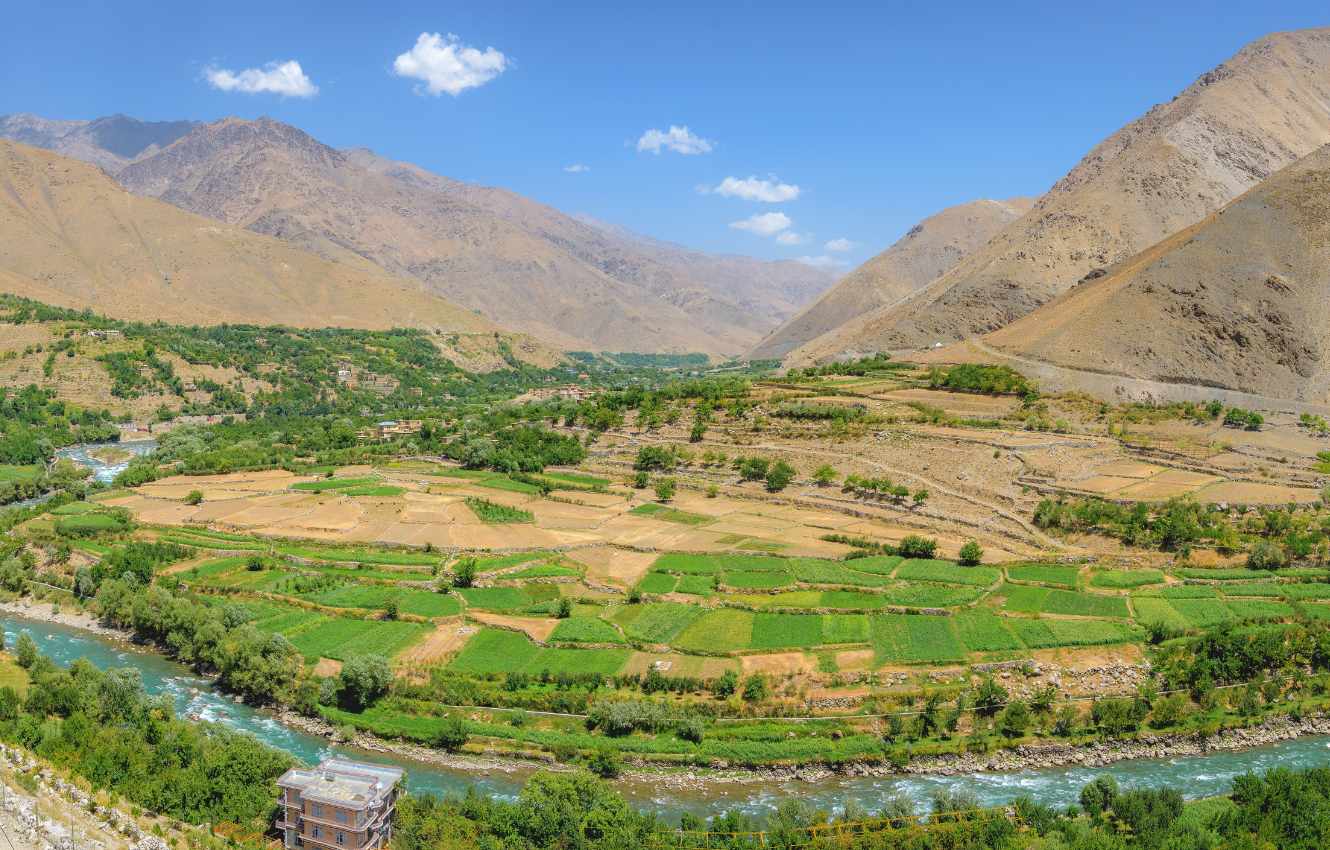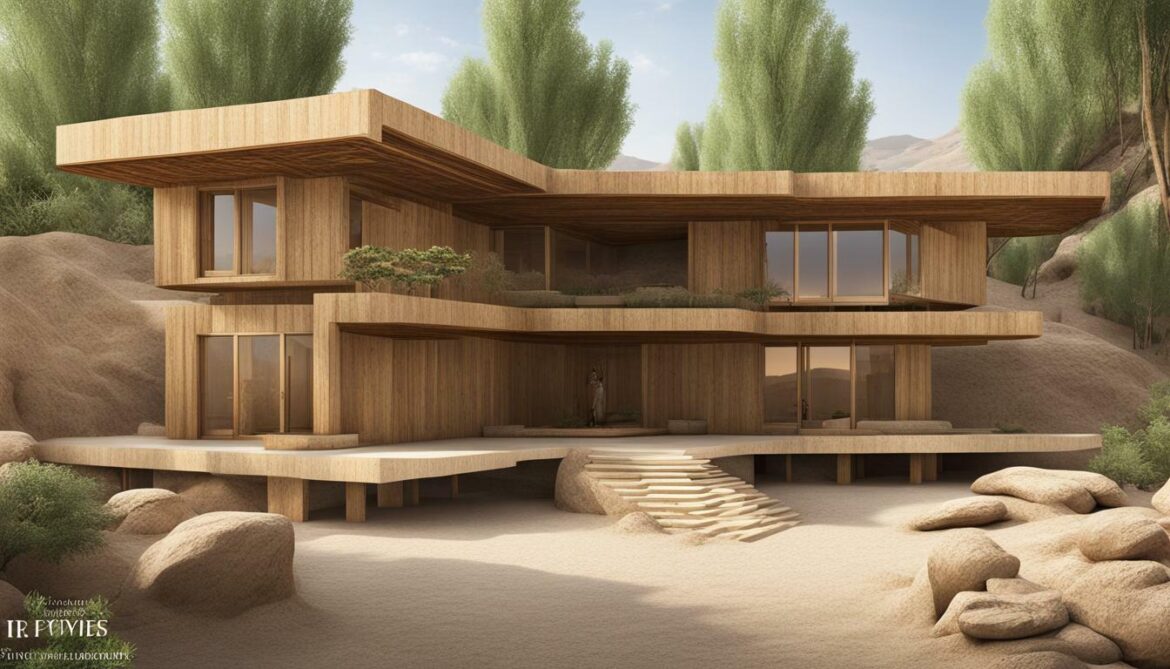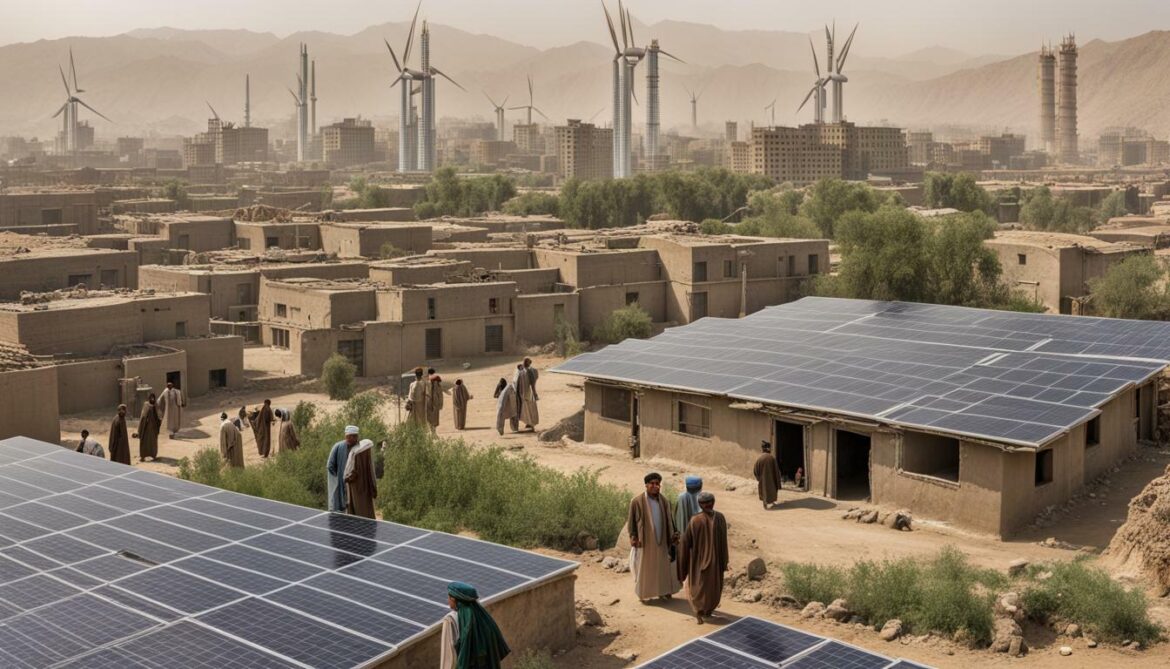Green Building Afghanistan: Sustainable Future of Architecture
Green building practices are increasingly gaining popularity worldwide, and Afghanistan is no exception. Sustainable construction practices have become a necessity in the country, where buildings consume a significant amount of energy and resources. The construction industry is one of the major contributors to greenhouse gas emissions, making it crucial to adopt eco-friendly building practices.
Green building practices not only reduce the environmental impact of construction projects, but they also produce buildings that are healthier, more comfortable, and cost-efficient. Sustainable construction methods can significantly reduce energy consumption and waste, making them an essential tool in creating a sustainable future for Afghanistan’s architecture.
Afghanistan’s history of war make it a more complex territory when it comes to moving forward in these ways. Yet, much like climate change, there are some opportunities presented by this landscape.

Green Building Afghanistan Key Takeaways
- Green building practices are crucial in promoting a sustainable future for Afghanistan’s architecture
- The history of war has had an important impact
- Sustainable construction methods can significantly reduce energy consumption and waste
- Green buildings are healthier, more comfortable, and cost-efficient
Energy-Efficient Buildings Afghanistan: A Step Towards Sustainability
Green architecture in Afghanistan is making strides towards sustainability, with a focus on energy-efficient buildings. By adopting sustainable design practices, architects and builders can create buildings that are both energy-efficient and environmentally-friendly, reducing their carbon footprint and promoting a greener future for Afghanistan.

Energy-efficient buildings utilise design principles and strategies that maximise the use of natural light and ventilation, while minimising energy consumption. This can be achieved through the use of materials such as insulated glass, high-efficiency HVAC systems, and energy-efficient lighting.
Moreover, green architecture in Afghanistan is moving towards sustainable design that incorporates environmentally-friendly materials and methods. Sustainable design principles integrate green roofs, living walls, and recycled materials, which not only promote sustainability but also create buildings that are aesthetically pleasing and functional.
By investing in energy-efficient buildings, Afghanistan can reduce its carbon footprint and mitigate the impact of climate change. Energy-efficient buildings also result in cost savings, as they require less energy and resources to operate over the long-term.
Kabul Green Homes Project draws on the experience and best practices acquired during the implementation of AFG-TAJ project implemented in Afghanistan and Tajikistan funded by AFD. It applies solar passive and energy solutions in 15 districts of Kabul City where the housing, heating and pollution problems are most acute.

Green architecture in Afghanistan is paving the way for sustainable design practices that can have a significant impact on the environment. By implementing energy-efficient buildings and environmentally-friendly materials, architects and builders can create buildings that are functional, aesthetically pleasing, and sustainable, promoting a brighter future for Afghanistan.
Renewable Materials: Building for a Greener Future in Afghanistan
As interest in sustainable building grows, the use of renewable materials is becoming increasingly popular in Afghanistan. Renewable materials are materials that can be replenished naturally and are not depleted with use. They are a great alternative to non-renewable materials, that are often harmful to the environment.
Green building practices in Afghanistan utilise renewable materials such as bamboo, reclaimed wood and recycled materials. Bamboo, a fast-growing grass, is an ideal sustainable building material due to its rapid growth rate and durability. Reclaimed wood, salvaged from old buildings, can be given a new life with creative design and provide a unique aesthetic to a building. Using recycled materials, such as plastic lumber, can also significantly reduce the amount of waste going into landfills.
Implementing environmentally friendly construction practices can further minimise the impact of building projects on the environment. For example, using low-impact excavation techniques and minimising waste can help reduce the environmental footprint of a project. These practices also create a healthier indoor environment for occupants of the building.
It is important to note that using renewable materials and incorporating environmentally friendly construction practices can also have economic benefits. Renewable materials can be cost-effective and may even be more affordable than non-renewable options in some cases. The use of sustainable practices can also create job opportunities in the green building industry.
By using renewable materials and environmentally friendly construction practices, we can help build a greener future for Afghanistan. As the construction industry continues to grow in the country, it is crucial that we prioritise sustainable solutions in order to minimise the environmental impact of building projects and promote a healthier, cleaner future.

The effect of war on Afghanistan’s green building efforts is multifaceted
It has impacted both the environmental and socio-economic aspects of the country’s development. Here are some key points to consider:
Infrastructure Damage and Reconstruction Challenges
- Destruction of Infrastructure: Prolonged conflict has led to the destruction of existing infrastructure, including buildings, roads, and energy systems. Rebuilding efforts often prioritise basic needs over sustainable practices.
- Resource Allocation: War shifts financial and material resources towards immediate humanitarian needs and security, leaving little for green building initiatives.
- Skilled Workforce: The war has caused significant brain drain, with many skilled professionals leaving the country, reducing the available expertise needed for green building projects.
Environmental Degradation
- Deforestation and Land Degradation: Conflict often leads to the unsustainable use of natural resources, such as deforestation for fuel, which degrades the environment and makes sustainable construction more challenging.
- Pollution and Waste: War generates significant amounts of waste and pollution, including hazardous materials that complicate efforts to create safe, sustainable building environments.
Socio-Economic Factors
- Economic Instability: The war has severely impacted Afghanistan’s economy, reducing investment in green technologies and sustainable development projects.
- Poverty and Unemployment: High levels of poverty and unemployment mean that green building is often seen as a luxury rather than a necessity.
- Government and Policy Instability: Frequent changes in government and policy due to conflict hinder the development and enforcement of regulations that could promote green building practices.

International Aid and Reconstruction Efforts
- Aid Dependency: Afghanistan relies heavily on international aid, which can be both a challenge and an opportunity for green building. While aid can fund sustainable projects, it often comes with strings attached and may not prioritize green building.
- Sustainable Development Programmes: Some international organisations and NGOs are working to integrate green building principles into reconstruction efforts, though these projects are often limited in scope and scale.
Cultural and Educational Barriers
- Lack of Awareness: There is limited awareness and understanding of green building concepts among the general population and local builders.
- Educational Programmes: Conflict disrupts education systems, reducing opportunities for training in green building techniques.
Potential for Green Building in Post-Conflict Reconstruction
- Opportunity for Sustainable Rebuilding: Post-conflict reconstruction offers an opportunity to integrate green building practices from the ground up, potentially creating more resilient and sustainable communities.
- International Partnerships: Collaboration with international experts and organisations can bring in knowledge and technology for green building.
Examples of Afghan Green Building Efforts
Afghanistan has been gradually incorporating green building practices, albeit at a slower pace compared to more developed regions due to ongoing challenges. However, there are notable examples of projects and initiatives aimed at promoting sustainable and environmentally friendly construction in the country. Here are some key examples:

Bamyan Solar Plant: While not a building per se, the Bamyan Solar Plant is a significant green project in Afghanistan. It provides renewable energy to the Bamyan province, reducing reliance on diesel generators and contributing to a cleaner environment.
Aga Khan Development Network (AKDN) Projects: The AKDN has been involved in various construction projects in Afghanistan that emphasize sustainability. This includes the restoration and construction of culturally significant buildings using traditional materials and techniques that are energy-efficient and environmentally friendly.
German-Afghan Training and Development (GATE) Initiative: This project focuses on training Afghan engineers and architects in sustainable building practices. The initiative has led to the construction of several green buildings, incorporating energy-efficient designs and materials.
Green Village Kabul: Initially a secure residential compound for international organizations, Green Village Kabul incorporates various green building practices, including solar panels, waste management systems, and water recycling mechanisms.
USAID Infrastructure Projects: The United States Agency for International Development (USAID) has funded several infrastructure projects in Afghanistan, some of which include sustainable building practices. These projects often emphasize energy efficiency, local materials, and sustainable water usage.
LEED Certification Efforts: While not widespread, there have been efforts to achieve LEED (Leadership in Energy and Environmental Design) certification for some buildings in Afghanistan. This includes incorporating energy-efficient systems, sustainable materials, and waste reduction strategies.
Local NGO Initiatives: Various local NGOs have undertaken small-scale green building projects, particularly in rural areas. These projects often use locally sourced materials and traditional building techniques adapted to modern sustainability standards.
School Construction Projects: Organisations like UNICEF and other international NGOs have been involved in constructing schools with green building principles. These schools often feature improved insulation, natural lighting, and rainwater harvesting systems.
These examples illustrate the growing awareness and implementation of green building practices in Afghanistan, despite the country’s challenging context. The focus has often been on combining traditional methods with modern sustainability practices to create environmentally friendly and culturally appropriate structures.
The Green Building Revolution in Afghanistan: Challenges and Opportunities
Despite the numerous benefits of green building, its implementation in Afghanistan has been met with several challenges. Firstly, green building practices and technologies are relatively new to the country, and many builders and developers are still unfamiliar with these practices. This lack of knowledge and awareness can hinder the adoption of sustainable construction methods.
Another significant challenge is the cost of implementing green building practices. Many builders and developers in Afghanistan may not be able to afford the initial investment required for sustainable construction. However, it is important to note that the long-term benefits of green building, such as reduced energy costs and increased property value, can offset the initial investment in the long run.
Additionally, the lack of government regulations and incentives for green building in Afghanistan can also hinder its adoption. Without regulations mandating sustainable construction practices or incentives to encourage their adoption, builders and developers may not see the need to invest in green building.
Despite these challenges, there are several opportunities for the growth of green building in Afghanistan. As the country continues to recover and rebuild, there is a significant need for new buildings and infrastructure. This presents an opportunity to incorporate sustainable construction methods into new projects from the outset.
Furthermore, the economic benefits of adopting green building practices cannot be ignored. The use of locally sourced renewable materials can provide jobs and support local economies. Additionally, the reduced energy costs associated with green buildings can save money for both building owners and tenants.
In conclusion, while there are challenges to the implementation of green building practices in Afghanistan, the opportunities for their adoption are significant. By investing in sustainable construction methods and materials, Afghanistan can create a greener and more sustainable future for its architecture.

Conclusion
In conclusion, the adoption of green building practices in Afghanistan is crucial for the nation’s sustainable future. By implementing energy-efficient buildings, using renewable materials, and embracing environmentally friendly construction practices, Afghanistan can reduce its environmental impact and contribute to a cleaner, greener landscape.
Despite the challenges associated with sustainable construction, such as lack of awareness and limited resources, the benefits of green building are undeniable. In addition to reducing energy consumption and promoting environmental responsibility, green building practices can create job opportunities and stimulate economic growth.
Moving Forward
As Afghanistan continues to rebuild and develop, it is essential that green building practices become a priority. By incorporating sustainable design principles into new construction projects and retrofitting existing buildings, Afghanistan can pave the way for a more sustainable future.
We must all play a role in promoting green building practices and supporting sustainable development in Afghanistan and beyond. Together, we can create a better future for our planet and future generations.
FAQ
Q: What is green building?
A: Green building is a sustainable construction approach that focuses on minimizing the environmental impact of buildings. It involves using energy-efficient materials and design principles to reduce energy consumption, water usage, and waste generation.
Q: Why is green building important in Afghanistan?
A: Green building is important in Afghanistan because it promotes sustainable development and helps mitigate the environmental challenges the country faces. It can lead to reduced energy costs, improved indoor air quality, and reduced strain on natural resources.
Q: What are energy-efficient buildings?
A: Energy-efficient buildings are designed to minimize energy consumption and maximize energy savings. They employ insulation, efficient lighting systems, and renewable energy sources to reduce the amount of energy needed for heating, cooling, and lighting.
Q: How do renewable materials contribute to green building?
A: Renewable materials, such as bamboo and reclaimed wood, are sustainable alternatives to traditional building materials. Using renewable materials reduces the demand for virgin resources and helps protect the environment.
Q: What are the challenges of implementing green building practices in Afghanistan?
A: Some challenges of implementing green building practices in Afghanistan include limited awareness and understanding of sustainable construction, lack of access to eco-friendly building materials, and the need for skilled professionals trained in green building techniques.
You may also enjoy – Green building incentives and policies

























Post comments (0)